Complete guide to still life photography – PLUS 10 contemporary still life photographers that need to be on your radar
Still life photography, like any photographic discipline takes immense skill. A major benefit however of working with still life or miniature, is that you can try out lighting styles and techniques in a diorama, honing you abilities and adding depth to your knowledge – before taking your ideas to set.
You’ve tested your ideas, and you already know if they’ll work or not. Stanley Kubrick was well known for this, he’d make the entire scene in miniature and then take a 10×8 Polaroid to see if it came out on film how he wanted. A big win is of course it will save you loads of money on gear, don’t bother spending thousands on new lighting rigs, flags and diffusers, simply make them up in miniature and play around with materials you have at home so you can better understand their properties and how they’ll affect light…then scale them up!
In still life photography, the photographer has complete control over the scene. This means that they can take the time to set up the shot exactly as they want it, and then take their time taking the photo. This allows for a lot of experimentation, and gives the photographer a chance to really perfect their craft.
I thoroughly recommend in the first instance to find a still life photographer who’s work you really like and then try to imitate it. You’ll learn a lot, and fast. It’s the quickest way to mastery as you’ll appreciate how light interacts with different surfaces and textures and how different light sources interact with different objects.
Take this seemingly very simple shot by Ashraful Arefin. It’s emotive, artistic and beautifully composed. Better yet, it makes use of objects that can either be found at home, or found outside, all for free. A broken mug, some blossom from a tree and a setting sun to create the orange light in the background. From recreating this simple shot you’ll understand more about lighting, colour theory, composition, story telling, bokeh, depth of field and freezing motion. All for free. Still life photography takes practice and dedication, but the rewards and depth of understanding you’ll receive from undertaking a still life project will far outweigh the effort it takes to set up, plus, it’s alot of fun.

Still life photography can be literally anything. Food, toys, books, office supplies, you name it. The only limiting factor is your imagination. Take a branch of cherry blossom in the spring, place it in a jug by a window with a clean background, boom, looks just like a Cezanne. Fruits, jugs, soft furnishings and flowers are the traditional inanimate objects of choice of the great painters, but hopefully you’ll see from this article that anything can be made into a really cool still life image.
Most people are familiar with still life paintings, which often feature an arrangement of inanimate objects such as flowers, fruit, or books. While still life paintings may appear to be simple, they can actually be quite complex and challenging to create. In order to capture the essence of an object, the artist must have a keen eye for detail. They must also be able to create a sense of depth and perspective, using light and shadow to create a three-dimensional effect. The best still life paintings are those that not only accurately depict the subject matter, but also convey the artist’s unique vision and interpretation. As with any type of painting, the artist’s skill, talent, and imagination are key factors in creating a successful still life painting. The exact same principles apply to photography. Something to consider is that still life composition has been extensively covered by the master painters of the last one hundred years, so there’s a great deal to be gleaned from studying painters as well as photographers. Look at Paul Cezanne, Pieter Claesz, Caravaggio and of course Van Gogh for inspiration.
If you’re conducting more thorough research, the Dutch masters are certainly worth investigating. Dutch still life painting reached its peak in the 17th century, a period coinciding with the Dutch Golden Age. This was a time of great prosperity for the Netherlands, and art was part of the country’s cultural flowering. The paintings were typically small and intimate, often featuring simple arrangements of everyday objects such as flowers, fruit, glasses, and plates. What set Dutch still life’s apart from those of other countries was the level of realism achieved by the artists. They used a technique known as “trompe l’oeil,” which employs subtle gradations of light and shadow to create an illusion of three-dimensional depth. This allowed them to achieve a level of realism that was uncanny for its time. Thanks to the skill of these artists, Dutch still life painting remains some of the most highly prized in the world.
So if you’re looking to get started in still life photography, this article is the complete guide you need to master skills, tips, lighting, and lens needed in creating stunning still life shots.
Table of Contents
- What is Still Life Photography
- Types of Still Life Photography
- Equipment Required for Still Life Photography
- Still Life Photography Ideas – The Best Contemporary Still Life Photographers
- Conclusion
What is Still Life Photography?

Still life photography is a form of photography and a work of art focusing on everyday or commonplace inanimate objects. Anything that’s still basically…because, still life…even though the thing might be dead, like a bug. But ‘Still Dead’ might be confusing for some people.. would be a cool play on words for a project idea though!
These objects can literally be anything but more often than not are objects found in nature or in the home that have some inherent beauty, think flowers, fruit, rocks or jugs, soft furnishings and table settings.
Constructing an engaging still life takes great sill and patience. You have to be willing to experiment as you won’t get it right first time.
The principal idea of still life photography isn’t just to create a beautiful scene, it’s to examine the relationship between objects.
Of course you can just photograph one object on it’s own, but then the relationship is with the negative space around it, rather than with another object.
Types of Still Life Photography
Still life photography is one of the most common types of photography used and prevalent on social media, often referred to as ‘lay-flats’.
There are tons of still-life images across the internet and on websites, billboards, and TV advertisements.
Most people have taken still life photographs before but not really paid a great deal of attention to it. Each time you capture places you’ve been, things you’ve done, or even meals you made, you’re taking still life photographs with your mobile phone. Only in the context that we are exploring, it’s executed with greater intent and much more control over the subject, it’s setting and how it’s lit. The most common types of still life photography are:
#1. Food Photography
Food photography is a kind of still-life photography that features all kinds of food, from fully cooked meals to raw produce.
Typically people aren’t included in these shots as the intention is to show off the produce. Either for the purpose of selling a product, or for selling individual produce. Whilst including people in the still life isn’t the norm, this only means there’s room for the genre to grow, why not experiment with it in your own work?
Consider alternatives to producing beautiful shots of food as well, why not explore the dark side? Food rots, this could make for an interesting project. The scene would no longer depict abundance, but decay and death.
Look at Sam Taylor Wood’s video of a still life decaying
Or check out Klaus Pichler’s still life photographs of rotting fruit

#2. Product Photography
Product photography falls into commercial photography categories. Here, you showcase a product to sell it.
These images are typically much more beautiful as opposed to the above which is more conceptual, the intention is purely to drive sales rather than to adorn the walls of a gallery.

#3. Table-top Photography
Table-top photography is another category of still life photography that focuses on arranging objects in an aesthetically pleasing manor on top of a table.
Tables add structure and solid geometric shapes to your composition, this then allows you to add softer elements such as fruits and flowers and immediately have contrast in texture, colour, shape and form.
It is one of the most common still life photography styles, and it is the easiest to pull off.
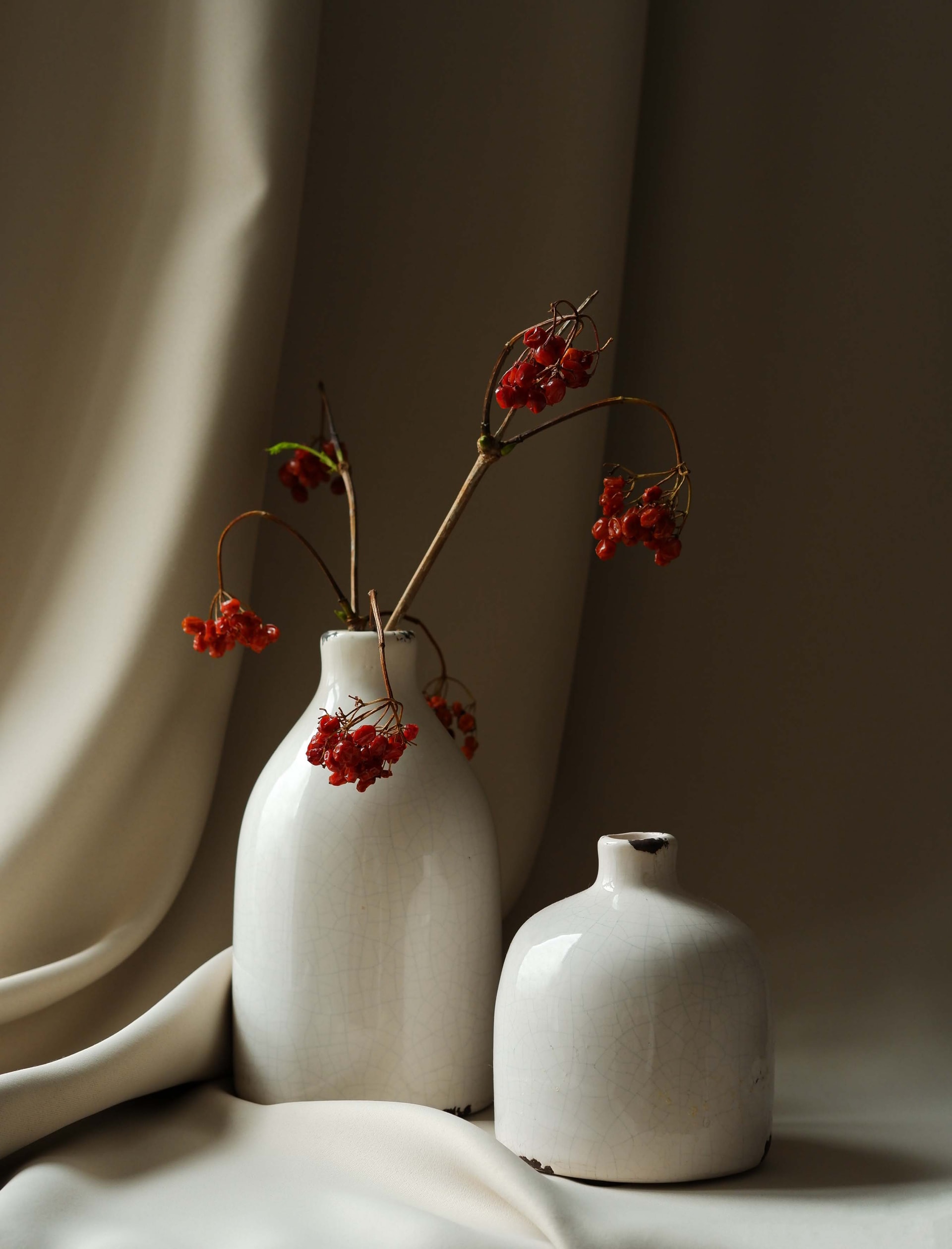
#4. Flower Photography
Flower photography is a classic and unique type of still life photography with flowers as the subject of the photographs.
You’ll often find still life photographers arranging beautiful bouquets or petals neatly and creatively.
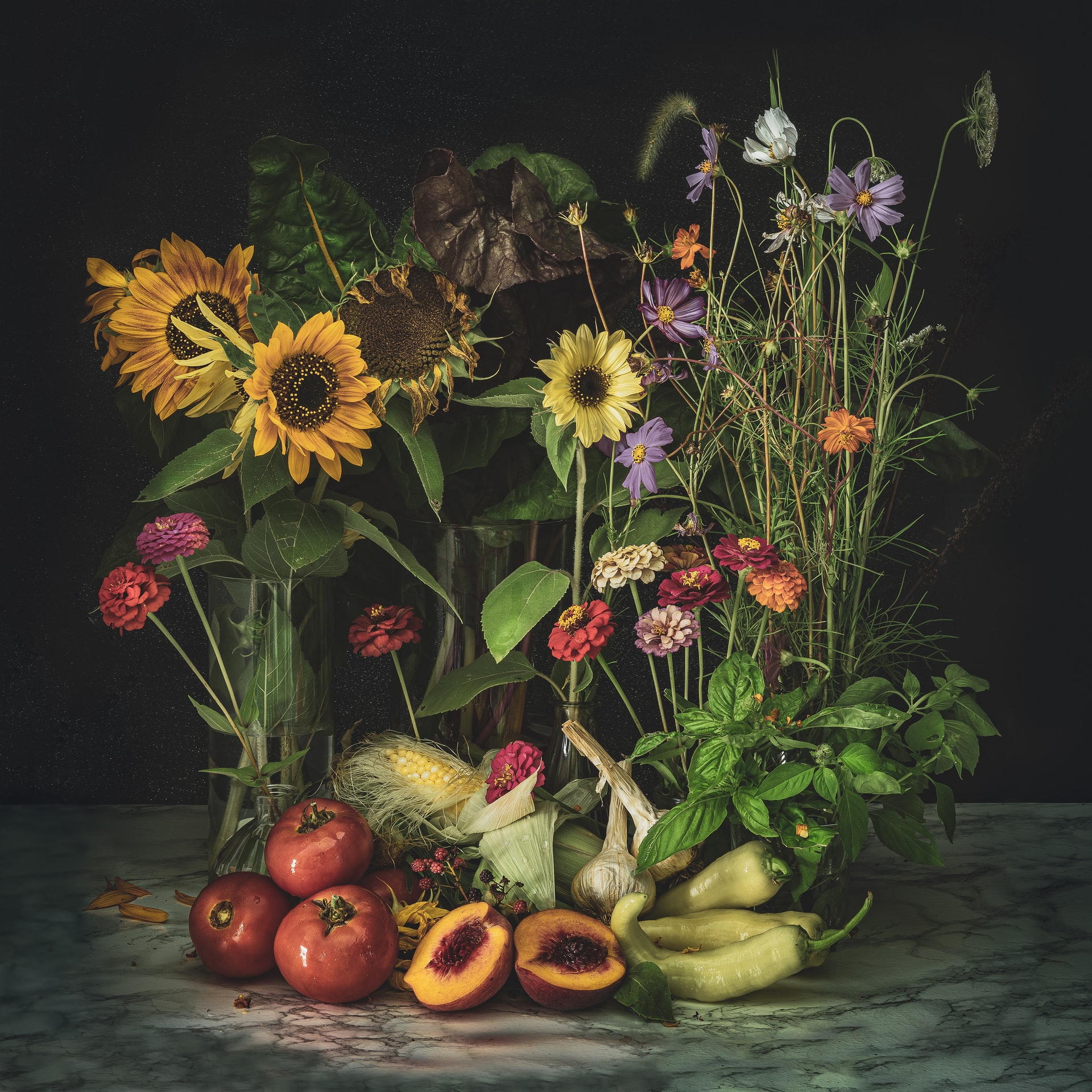
#5. Black and White Photography
Black and white photography captures still life images but switches from colour to grayscale.
This is one form of still life photography that photographers can use to improve their still life photography skills.
Black and white still life photography captures objects in a black and white, it carries a different mood that photographers can leverage for creative vision.
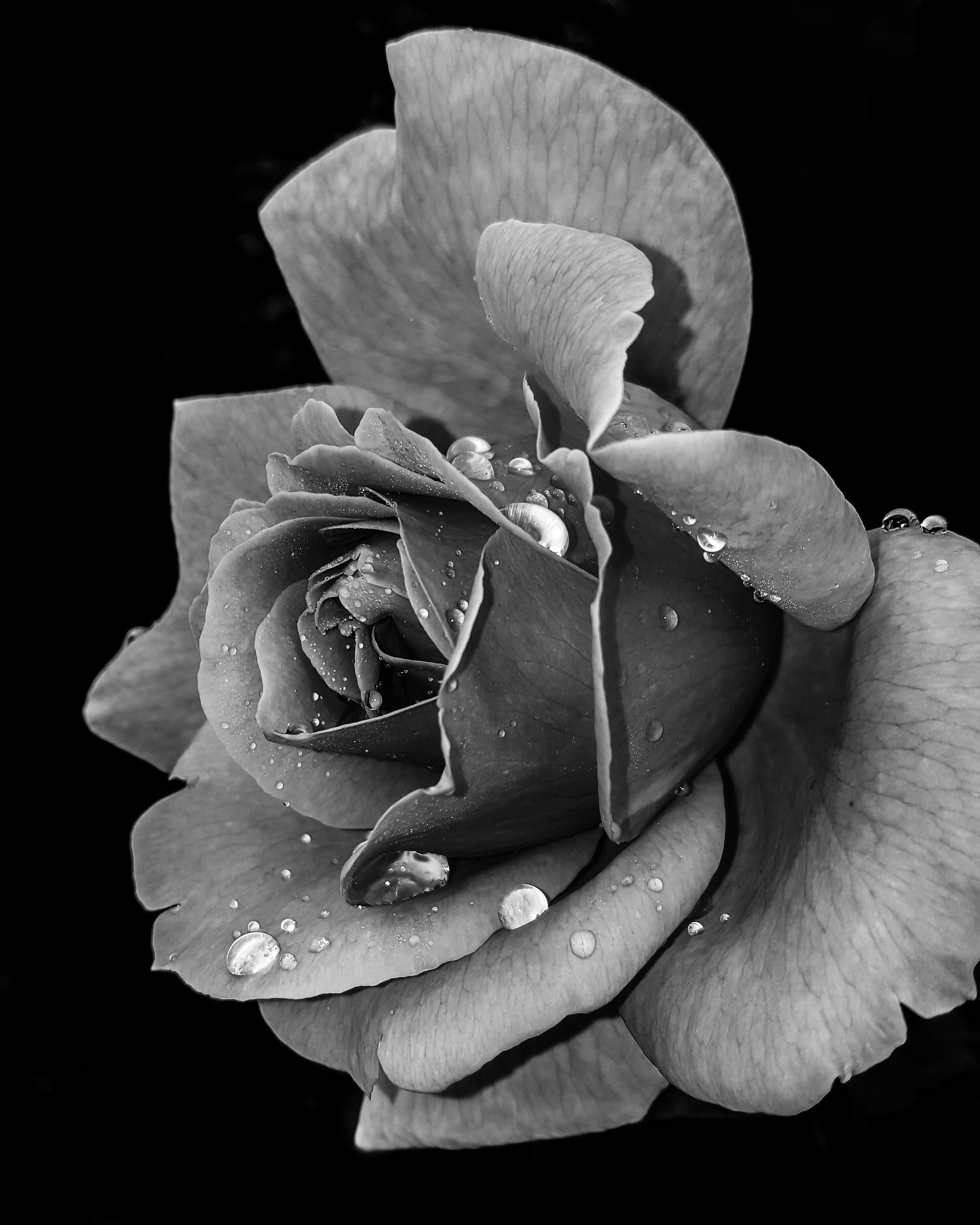
#6. Flat-lay Photography
Flat-lay in flat-lay photography refers to the angle of view and doesn’t necessarily refer to the subject.
Shooting the perfect flat-lay still life photography requires the sensor to be kept parallel to the surface where you have your subject.
Flat-lay has become an increasingly trendy type of photography on social networks like Instagram, with still life photographers from around the world uploading some amazing shots.

#7. Concept Photography
With concept photography, still life photographers use objects to represent things beyond what they are.
Concept Photography may appear strange or unusual and might be difficult to decipher at first glance, but they convey a deeper meaning and are captured in a way that drives home that meaning.
The below image for example.
The light above the hands looks like light when it reflects off of water in a swimming pool wall. The hands reaching up to the light, are we to believe the subject is drowning? But there is no water? Metaphorically drowning? In what? Conceptual work should leave the image open to interpretation and invite questions.
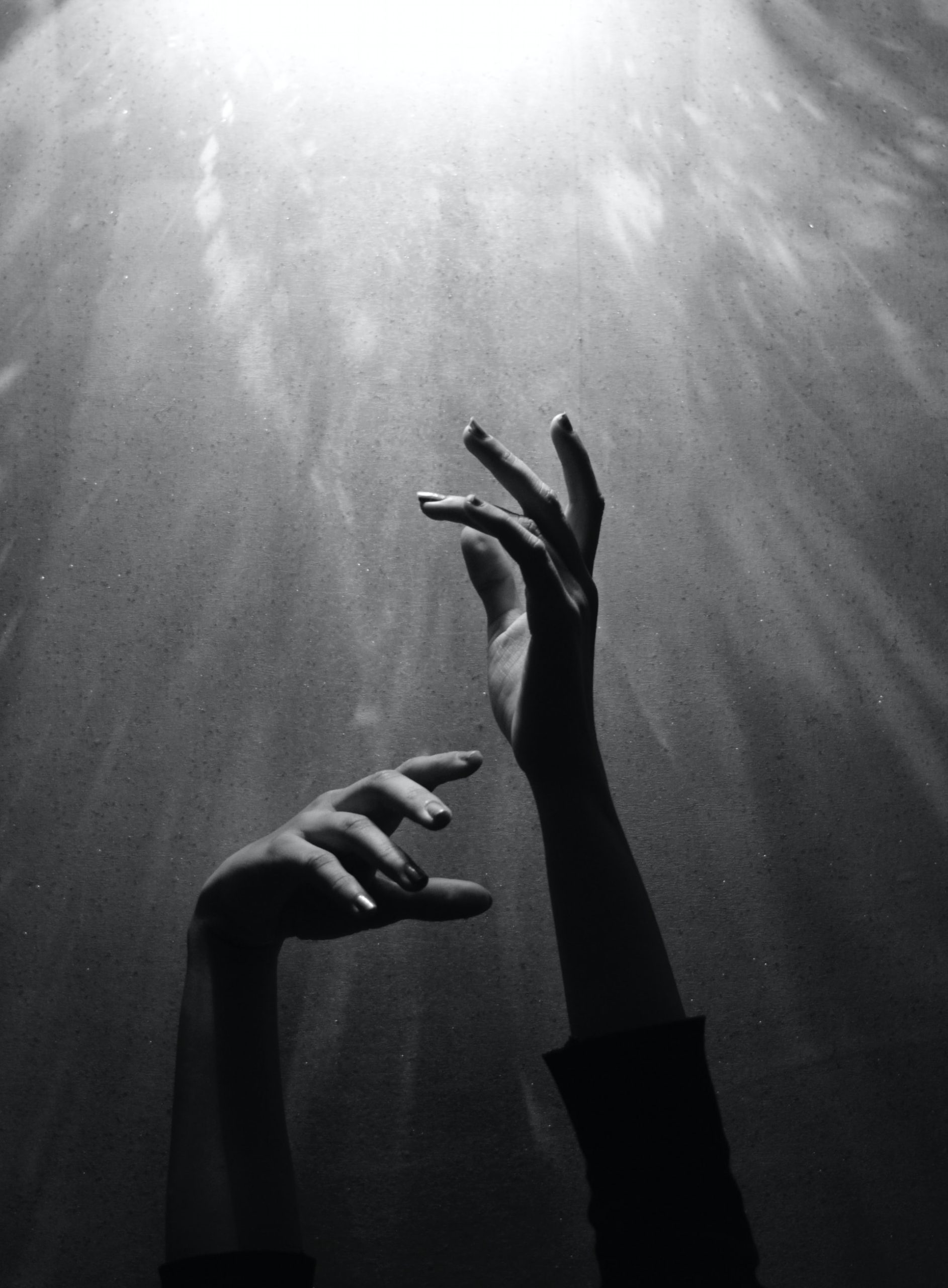
#8. Toy Photography
Toy Photography is a fun way of recreating iconic scenes and depicting real-life events while exploring the use of additional light sources in still life photography.
Toy photography can be incredibly fun as you can place toys completely out of context to create a new narrative.
Toy photography is excellent for another reason, and that’s because you can test different light sources on miniature people to see if they work before you head out to a portrait shoot with a real person. A great way to be creative on a budget and explore new ideas.

Equipment required for Still Life Photography
In still life photography, there are no rules or regulations made on concrete concerning the equipment to use.
Part of the fun is the challenge of coming up with new and exciting combos to make things work perfectly. Generally, below are some pieces of equipment you will need:
#1. Camera
Yes, obvious I know. From large-format film camera to smartphone camera, it doesn’t matter which you use.
Any camera is fine to take still life photographs with, it depends more on what you need the final shot to look like.
But as a rule of thumb, if you’re needing to print it big for an advert, or it needs to be high resolution for a cook book say, then you’ll want a high end DSLR more than likely.
#2. Lenses
Lenses are also another important piece of equipment for shooting still life photography, and the prime 50 mm lens is the classic choice.
The prime 50 mm lens is inexpensive and offers a realistic image without distortion on a full-frame camera.
The 50mm is dependable and largely mimics how the human eye sees the world, so it’s a great way to place the audience in the scene. The higher the lens number in mm the more it will compress perspective, which is great if you have a starter lens that can’t shoot at wide apertures. You can get around this to a degree by using a longer focal length in mm, the longer the lens, the more exaggerated the depth of field becomes.
#3. Lighting
Lighting is another piece of equipment you need in still life photography, and it doesn’t necessarily have to be conventional.
In addition to flashes and speed lights, you can harness the beauty of natural light for your compositions. Photographers who decide to go with natural light rely on diffusers and reflectors. If you don’t have these, don’t forget you’re playing in miniature, so simply use a white pillowcase, piece of plain paper or even some tin foil.
Coloured reflectors can bring warmth and liveliness to a still life photograph and help the composition by adding particular tones and colours. Again, don’t overthink it, use coloured A4 card.
Diffusers and strobes are additional lighting tools but avoid on-camera lighting that produces a straight-on flash. Its effect is usually harsh and will make your composition look flat.
Always light from the side, never from straight on.
Use a desk lamp if you’re looking for cheap alternative for lighting.
Using a lightbox is also a great alternative and gives you a clean white background to work with.
#4. Tripod
The tripod is another useful tool for creating great still life imagery. It’s easier to take shots with the camera in a fixed location as you can tweak the setup of your objects without upsetting your overall composition.
A tripod makes this possible when you set up the camera and frame your image while rearranging background and photo subjects.
#5. Image Editing Software
Images straight out of the camera typically look a bit rubbish.
If you don’t have Photoshop or Lightroom no problem, there are plenty of great editing apps you can get on your phone completely free, I’m doing a round up post on these soon.
#6. Backgrounds
You also need backgrounds and surfaces to enhance your subject and make your shots engaging.
Canvas, wood, bedsheets, whatever you can think of. If you place it far enough in the background it won’t be in focus anyway.
#7. A Spirit level
This is invaluable when you’re shooting lay flats.
They are much more complicated to rig up, but if you have a spirit level you can gauge if you are taking your picture parallel to the subject. Getting your lay flats actually flat will make the look a lot better.
Still Life Photography Ideas – 10 contemporary photographers
Without further ado, here are twelve still life photographers that will hopefully inspire you to create a still life of your own.
Hardi Saputra
Surreal, dreamlike and full of whimsy, Hardi Saputra makes creating beautiful, creative still life photographs look easy. I’m keen to draw attention to his work and to list him first in this article because he embraces the idea of utilising what is around him. Yes his scenes are dreamlike, but everything he uses to create his scenes either exists in a typical household or is very cheap to acquire. Take the scene below for example, a child’s toy giraffe, some cotton wool, coloured paper, some string and some ping pong balls, a bit of fiddling with some glue, and you’ve got a picture. Don’t overthink your work or get stuck thinking that you need to spend money to make a cool scene. Use your imagination and make use of all sorts of scraps lying around. For scale, Hardi has said in interviews that he uses a 40cm square box to make his miniature scenes. This should help give you an idea of how you can create beauty on a small scale. He also stated that he started his photographic journey using an Android phone to take pictures. The quality of modern phone cameras is immense, pair it with a few desk lamps and a cardboard box, and you’ve got yourself a mini studio.
“My inspiration comes from my dreams. I always want to see a beautiful field of grass, beautiful clouds, and the stars. Instead of just imagining them, I decided to turn them into artwork. I also get inspiration from video games. The rocket was inspired by the Red Rocket station from Fallout games. I chose soft fabric materials and cute astronauts because I love playing a video game called LittleBigPlanet. The other sources of my inspiration are cartoons and anime. Most of them have unique and beautiful stories, skies and colours, especially the anime from Studio Ghibli because their clouds are so pretty.”

Henry Hargreaves
Henry makes this list because he takes information that is widely available and turns it into conceptual art. The contents of inmates last meals is only a Wikipedia search away, all you need is an idea and a bit of imagination and you’ve got yourself a really cool still life photography project. Exploring difficult topics like the last meal is also a really interesting intellectual exercise and is a great way to expand the creation of new ideas for you own, original pieces. Food is a universal language, each of us needing to eat, but having many different preferences. It allows you to connect with people on a deeper level by exploring what they eat, you could even embark upon a project that explores identity through food, can a picture of food be a portrait of a person? It opens up a whole new world for you to explore and develop ideas. Henry mentions on his website that he thoroughly enjoys collaborating on his projects, which is an excellent idea when trying to create your own still life pieces. Not only is it always handy to have a second person around for company and to challenge your ideas, but inevitably when setting up lights and dealing with small details, it’s always handy to have someone with you to help. You can then also help them with their project and learn from their mistakes too, so you both learn faster.
“In my photography I have always been fascinated by the mix of the mundane and the extraordinary. So I while was reading about efforts to stop the Last Meal tradition in Texas it sparked my interest. In the most unnatural moment there is (state sponsored death) what kind of requests for food had been made?”

Anna Nemoy
There is a great deal to be discovered in Anna’s incredibly beautiful still life photographs. She combines the toolkit of the great still life painters and brings it up to date with the use of the camera. Extreme depth of field, texture and minimalist composition all combine to make truly stunning images. Notice how Anna uses colour in her work. It’s extremely important when trying to master composition that you factor in colour when putting together these images. In the image directly below, the cloth is the same colour as the flowers, the jug and bowl in the background also have accents of pink that help balance the image. The deliberately picked petals at the bottom of the frame help draw the eye to the bottom of the frame and the background also has accents of pink, and the complimentary colour blue. See if you can gather objects from home to make a scene like this at home using your dining table or a block of wood. To get the painterly effect, you’ll need to add a texture layer in photoshop or using a phone app. Try the Mextures iphone app.
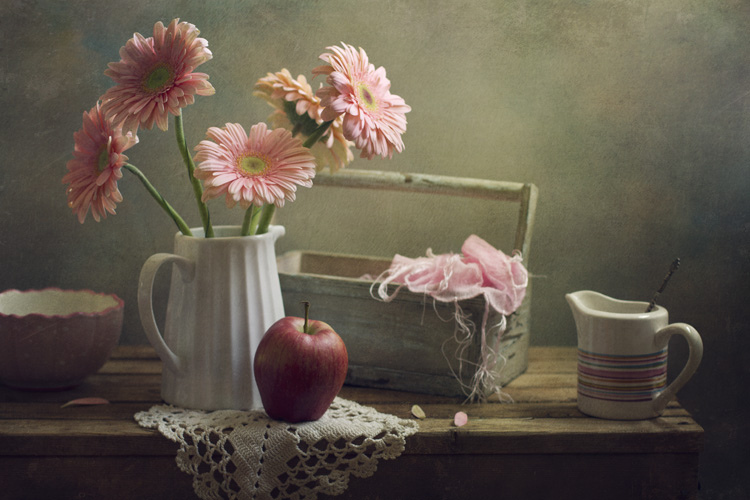

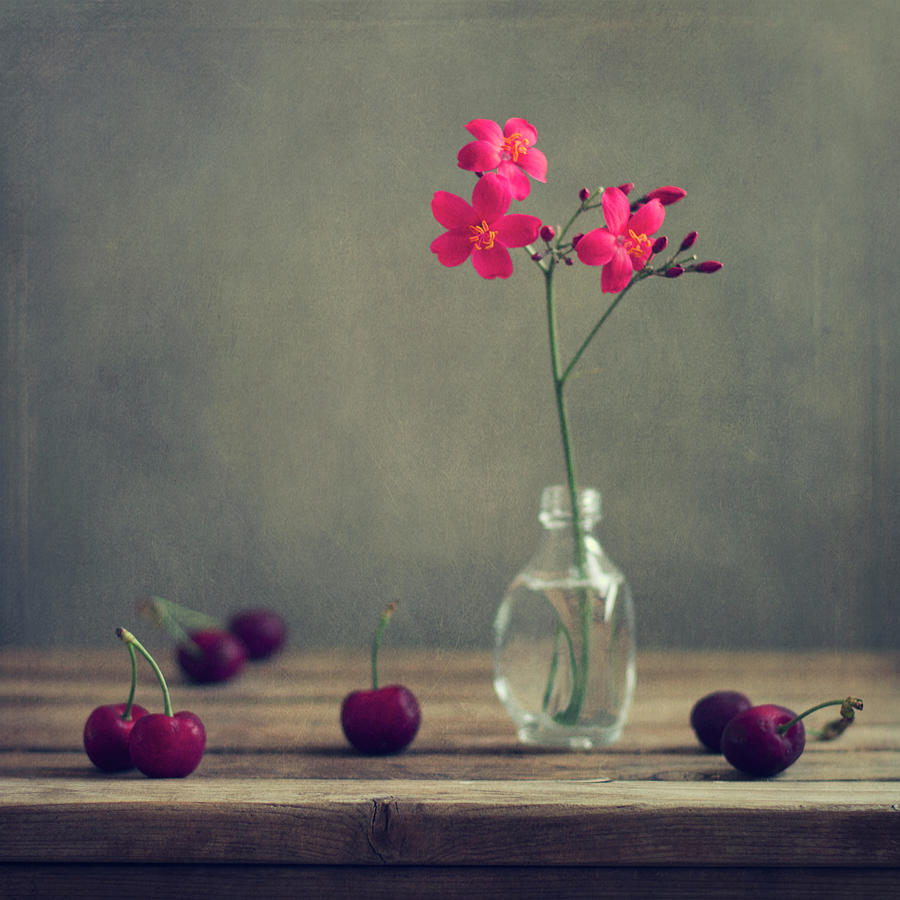
Michael Jackson
This one is a bit of a cheat as Jackson creates his still life images in the dark room rather than by setting up objects and photographing them. He is the only person in the world (to my knowledge) that creates these images known as Luminograms. A combination of different light sources, modifiers and bits of glass combine to make something that is truly extraordinary and entirely unique. Most photography students (I hope) will have access to a dark room, but even if you don’t just wait until night time, turn off all the lights and you’ll be able to play with a torch, some tubes and black and white darkroom paper. See if you can crack the code and work out how he does it!
I have a suspicion that he uses something like a Pringles tube and presses it firmly against the paper and then shines a light into it at an angle. The shadow of the edge of the tube would then create the 3D ball illusion. This may be well off, but it’s my guess. I think the straight lines are either created with a resist (something like a pencil and then washed off afterwards), or scored into the paper
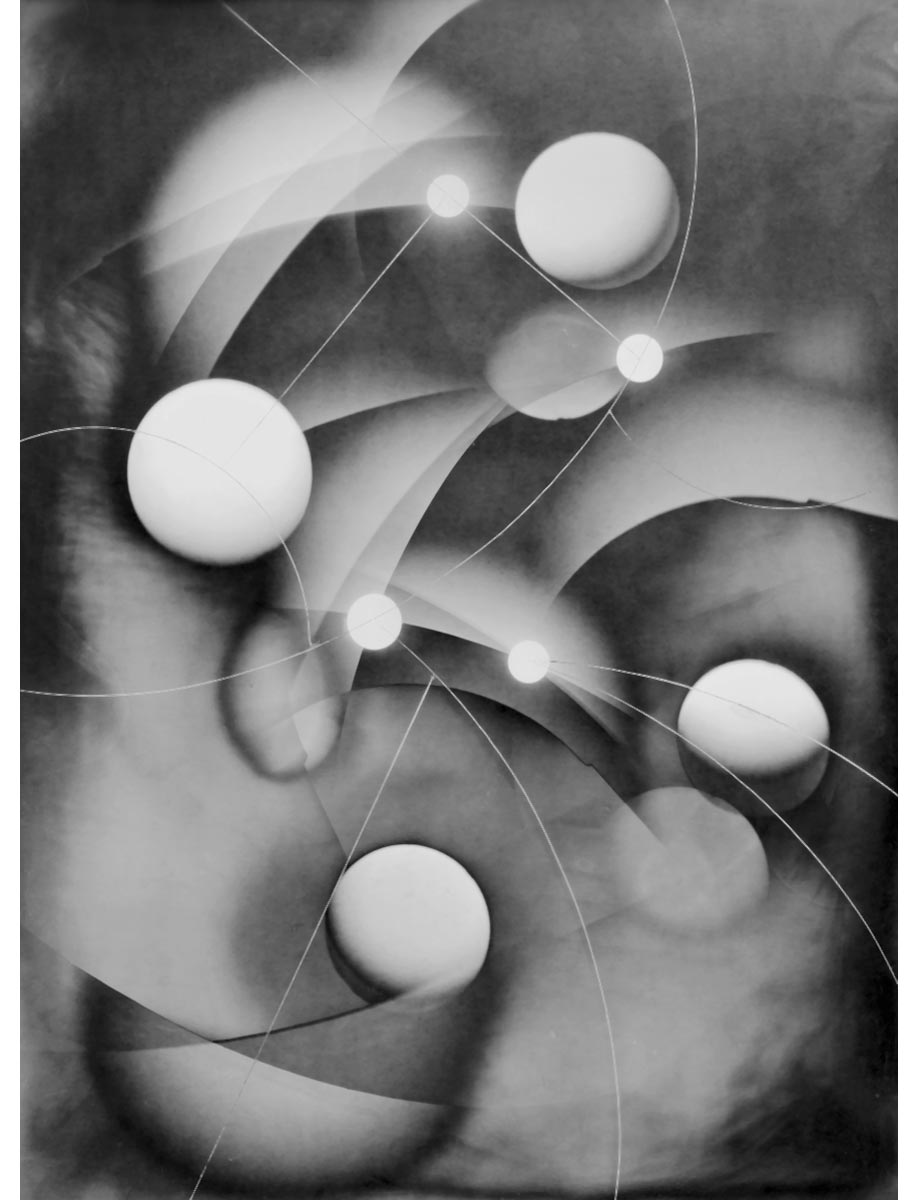
Paulette Tavormina
Paulette Tavormina is one of the most celebrated photographers of still life scenes, with her stunning and intricate images of everyday objects revolutionizing the genre. Born in Pittsburgh, PA, Paulette first discovered her passion for photography at a young age. Although she initially envisioned a career behind the camera, she soon found herself drawn instead to art direction and design. After earning a degree from Parsons School of Design in New York City, she went on to work as a set designer for theatre productions across the United States. It was during this time that she developed an interest in still life photography.
Paulette’s unique style stems from her love of crafting intricate compositions out of ordinary objects. She creates lush scenes that incorporate everything from flowers and fruit to toys and trinkets. Her carefully arranged scenes are brought to life by her use of vivid colours and rich textures, resulting in photographs that are at once beautiful and intriguing. Over the years, Paulette has built up an impressive body of work that has earned her critical acclaim both domestically and internationally. Today, she is considered one of the top photographers working in the still life field.
To create your own work in her style, collect fresh flowers and place them on black card. Don’t immediately spend money on fresh flowers, you can make plenty of interesting compositions out common flowers such as Dandelions, field daisies and Sweet Cicely. Then you’ll need a single direction light source, use a room with only one window for ease.

Jeroen Luijt
Still life photographer Jeroen Luijt was born in Holland in 1966. After studying art and design at the Royal Academy of Arts in The Hague, he began his career as a commercial photographer. However, it wasn’t until he turned his camera towards still life that he found his true calling. Luijt’s work is characterized by a strong use of light and shadow, as well as a keen eye for detail. His focus on simple objects—a cup, a vase, a book—has resulted in some truly stunning images. In recent years, Luijt has also begun to experiment with virtual reality, creating immersive experiences that allow viewers to explore his photographs in new ways. Whether he’s working in traditional photography or pushing the boundaries of technology, Jeroen Luijt continues to produce extraordinary work that highlights the beauty of the everyday.
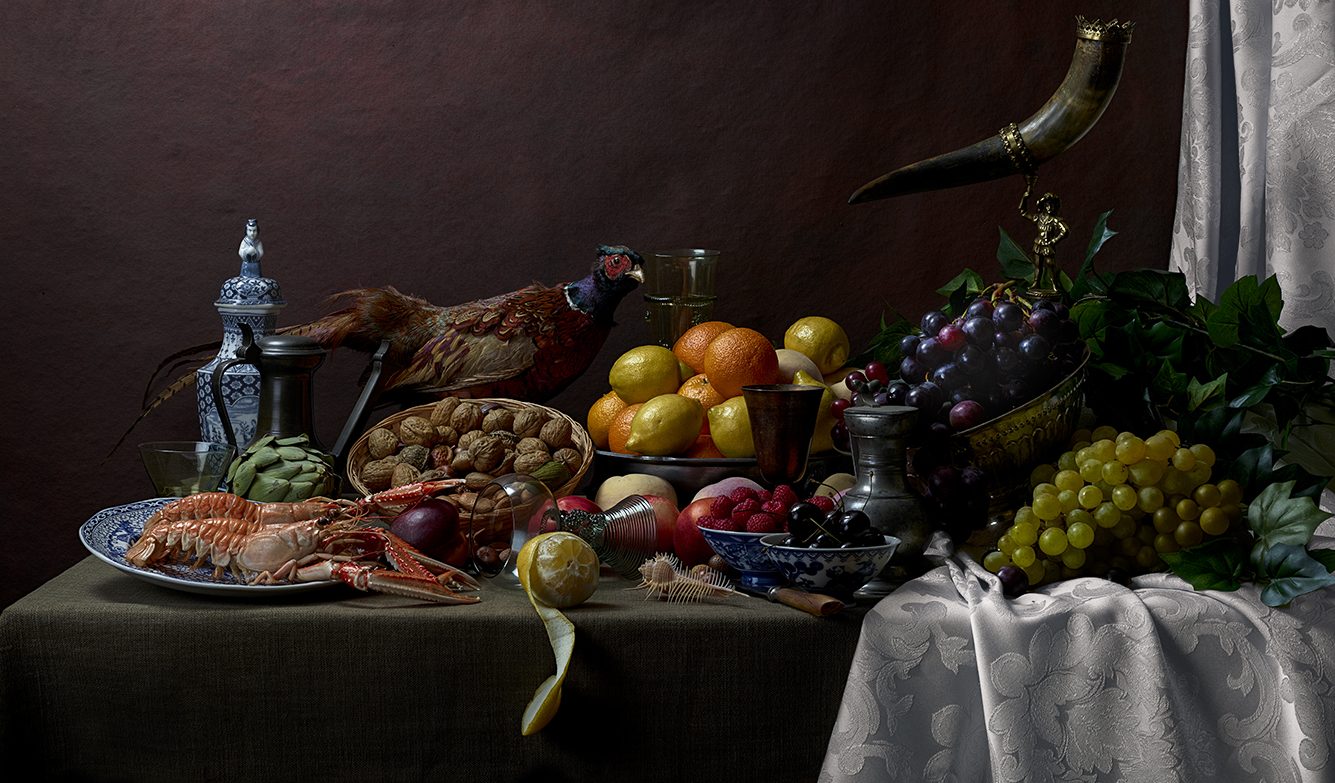
Laura Letinsky
Laura Letinsky is a renowned photographer who is best known for her stunningly detailed and graceful still life photographs. Born in Chicago in 1959, she was initially drawn to the medium of photography from a young age, using her high school darkroom to explore the possibilities of this new art form. After graduating from college with a degree in art history and religion, she decided to pursue her passion for photography professionally, studying at the San Francisco Art Institute before going on to complete an MFA at Yale University.
Letinsky’s work has been widely recognized and celebrated, with over 45 exhibitions and projects spanning countries around the world. Her style involves a careful and meticulous approach that focuses on capturing small details – an object here or a hand gesture there – within larger settings. She is famous for exploring themes such as domesticity and human relationships through intricate visual compositions that draw the viewer in. Her skilful use of light reveals beauty in even unexpected or mundane subjects, highlighting their textures, colours, and subtle interactions amongst one another.
Today, Letinsky continues to explore new topics within her artwork while teaching photography at various universities across North America. Her lifelong dedication to exploring both aesthetics and ideas through the lens have resulted in some truly stunning photographic creations that both inspire and challenge the viewer.
“In giving ourselves over to our sense of vision, it’s as if we’re saying it’s the only sense that matters.”

Olivia Parker
Born in 1938 in Pasadena, California, Olivia Parker was a self-taught photographer with a passion for capturing beauty through the lens of her camera. Her career began in the 1960s, when she shot a series of photographs depicting everyday objects and landscapes that were featured in titles such as Look, Harper’s Bazaar, and Town & Country. However, Parker quickly developed a unique style that set her apart from other photographers working at the time. While many others relied on vogue clothing and architecture to create dramatic visual compositions, Parker preferred simpler subject matter like fruit or bread. She often arranged these objects into still life’s on table top surfaces, drawing attention to the surfaces themselves rather than to any surrounding scenery. This approach helped to revolutionize the field of still life photography and has influenced countless artists since. Today, Olivia Parker remains one of the most celebrated names in this genre of art, with numerous exhibitions around the world and a legacy that continues to inspire new generations of photographers.

Ori Gersht
Born in Tel Aviv, Israel, in 1967, Ori Gersht is one of the world’s most prominent imaging artists. His distinctive style blends documentary photography with painterly imagery, exploring themes of death, war, and environmental destruction.
Ori first discovered his passion for photography as a teenager, when he began documenting newspaper announcements about political conflicts in Europe at the end of the Cold War. These images would eventually serve as inspiration for his signature hybrid style of still life photography.
Throughout his career, Ori has travelled all over the world to capture spectacular images at breath-taking locations such as Chernobyl and Oslo’s Vinderen Cemetery. He uses sophisticated equipment to freeze moments of intense emotion or tension that play out almost too quickly to see. Whether capturing fragments of exploded vintage porcelain shattered by air gun pellets or a bulldozer working its way through a layer of rime ice on top of crevices filled with icicles and snow crystals, Ori’s work offers complex layers of symbolism and beautiful visual contrast.
Despite the power and intensity of his photos, Ori manages to convey a sense of serenity in each image that belies their often devastating subject matter. His unique blend of intense emotion and meditative calm has made him one of the most celebrated still life photographers of his generation.

Margriet Smulders
Still life photographer Margriet Smulders is best known for her highly stylized and meticulously composed images. Born in the Netherlands in 1958, Smulders began her career as a fashion photographer before turning her attention to still life’s. Working in both digital and film mediums, she often combines traditional photography techniques with digital post-processing to create her signature look. Her work is characterized by a careful attention to detail, whether she is photographing a simple floral arrangement or a elaborate tableau. In recent years, Smulders has also begun experimenting with incorporating found objects and nature into her still life’s, creating unique and evocative images that are as much about the process of creating them as they are about the final product. no matter what the subject matter, Smulders’ photos always exude a sense of calm and beauty.

Conclusion
Creating beautiful and successful still life images is an impressive feat, and as you can see from the images above, has incredible scope for you to apply your creativity and imagination to in order to develop and explore your own ideas.
It doesn’t matter your creative vision or artistic goals. Still life photography is a fantastic place to start and a different type of photography worth trying.
